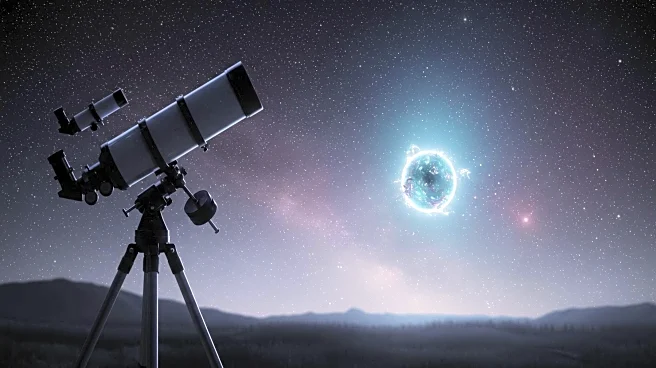What is the story about?
What's Happening?
Avi Loeb, head of the Galileo Project, is examining the non-gravitational acceleration of the interstellar object 3I/ATLAS. This object, observed by the Hubble Space Telescope, shows a glow ahead but lacks a typical cometary tail, suggesting it may be a dust-rich comet. Loeb's analysis aims to determine whether 3I/ATLAS is a natural comet or a technological object, based on its trajectory and acceleration. The object is set to make a close approach to the Sun on October 29, 2025, which could reveal more about its nature.
Why It's Important?
Understanding the nature of 3I/ATLAS is crucial for distinguishing between natural and potentially artificial interstellar objects. Accurate measurements of its non-gravitational acceleration could provide insights into its origin, impacting theories about interstellar travel and the presence of technological objects in space. This research could influence future studies on interstellar objects and their trajectories, contributing to our understanding of the cosmos.
What's Next?
As 3I/ATLAS approaches the Sun, further observations will be crucial to determine its nature. If its trajectory deviates from expectations, it could suggest technological propulsion, raising questions about extraterrestrial technology. Continued monitoring and analysis using advanced telescopes will be essential to uncovering the object's true nature.
AI Generated Content
Do you find this article useful?











